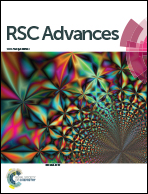Magnetic domains in rolled-up nanomembranes of Co/Pt multilayers with perpendicular magnetic anisotropy†
Abstract
Compact rolled-up nanomembranes of high quality (111)-oriented Co/Pt multilayers with perpendicular magnetic anisotropy are realized by combining strain engineering with top-down preparation methods. Magnetic force microscopy analyses were performed in the demagnetized state and under magnetic fields applied on rolled-up Co/Pt tubes. Observed magnetic domains are composed of radially polarized stripe-shaped domains. The stripes running along the rolled-up tubes axis are observed for magnetic fields applied along this direction, whereas a salmon-like pattern is observed for magnetic fields applied along the tube diameter. Present results indicate potential for applications as magnetic encoders and servo motors.


 Please wait while we load your content...
Please wait while we load your content...